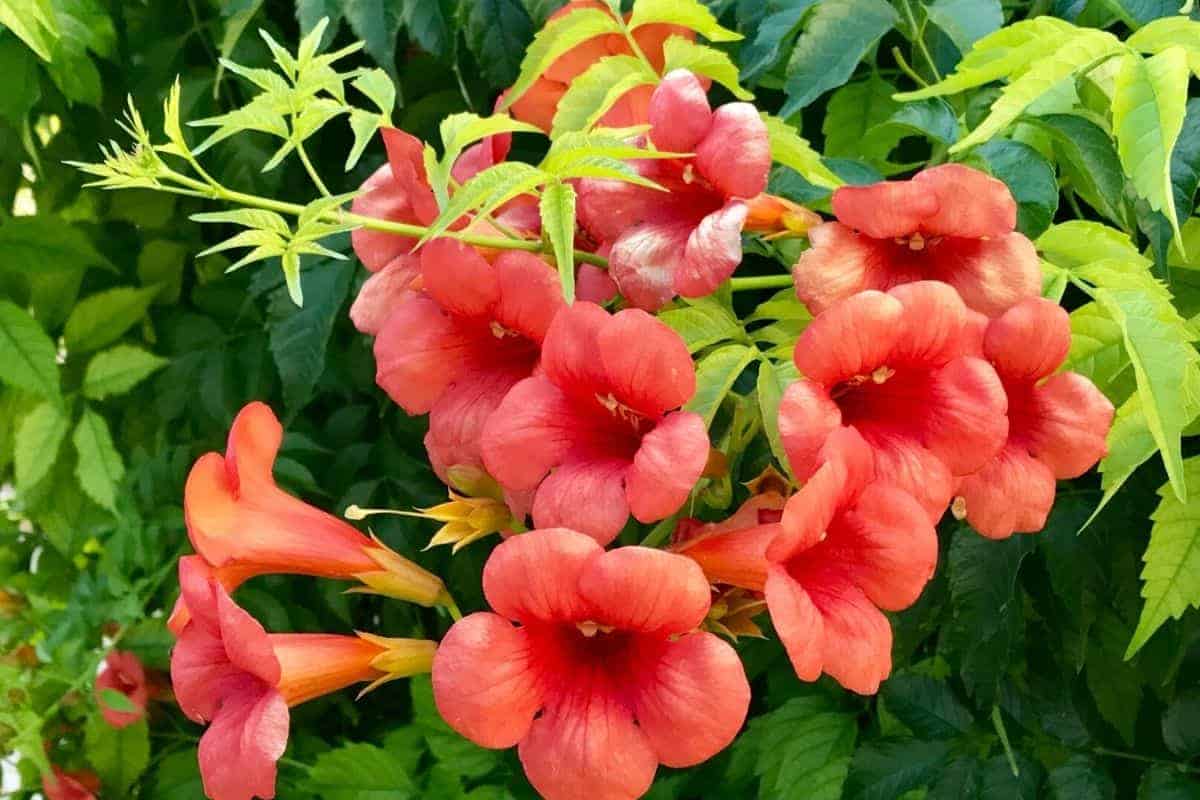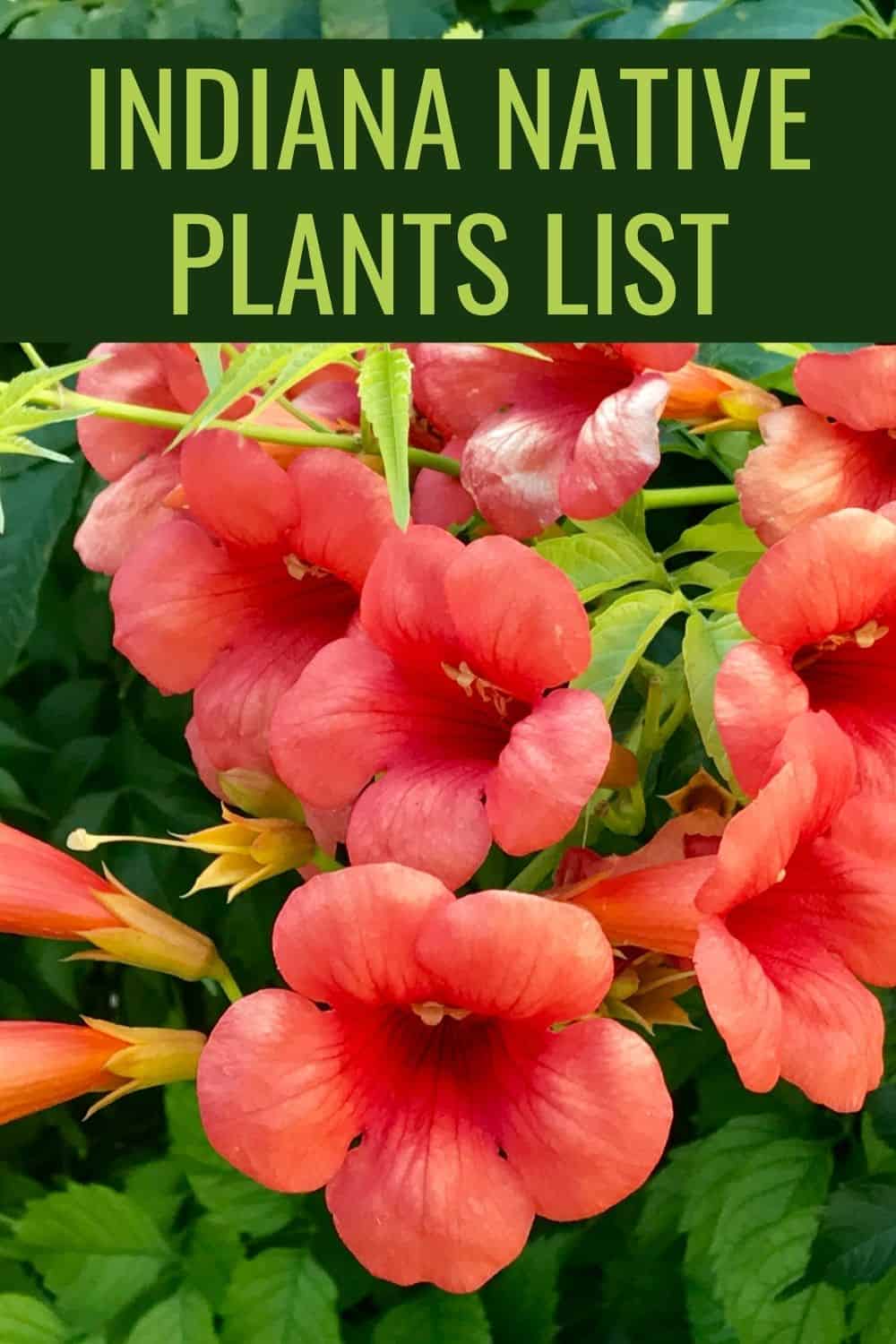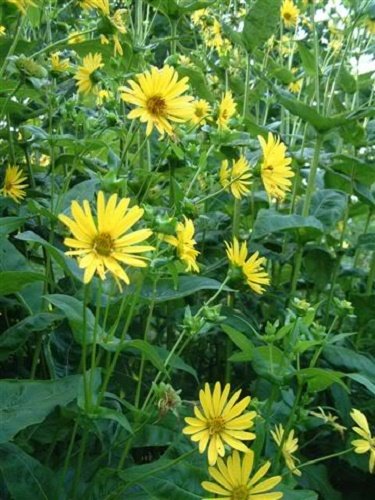If you’re looking to start a new garden in your lawn or make some changes to an existing garden, then it pays to learn more about the trees, shrubs, and flowers that are native to your area. There are so many benefits to choosing indigenous plants, but the top reason is that they are very low maintenance.
Our Indiana native plants list will help you choose some great low-maintenance plant ideas for your garden. These plants have already adapted to the area, so they don’t require as much upkeep for them to take or to stay alive.

Indiana Native Plants List for Your Garden
If you choose native plants for your garden, they will typically be low maintenance because they have already adjusted to the conditions of the soil, the climate, the local pests, and even local disease. They have evolved together with the native ecosystem, and they know how to thrive in these conditions. Here are some choices to consider:
1. American cranberry (Viburnum trilobum)
American cranberry is great for fall foliage color, and it can be red, yellow, orange, or shades of brown/burgundy.
This native shrub is large when mature, and can grow as high as 8-12 inches, with a spread of just as much. It has bright red berries that form starting in September and make good food for local wildlife and some birds. They like well-drained soil, slightly moist, and partial to full sun.
2. Black chokeberry (Aronia melanocarpa)
Another berry bush native to Indiana is black chokeberry. This small deciduous shrub has clusters of white flowers and in the fall, it has red leaves.
It’s great for bees and butterflies. It likes full sun but can do with partial shade as well. The flowers bloom in the summer and it’s a favorite of pollinators. It will grow to about 2-4 feet tall.
3. Buttonbush (Cephalanthus occidentalis)
Buttonbush is another low-maintenance choice that is great for local pollinators. Birds, bees, butterflies, wasps, and flies all like it.
It has glossy green leaves and round flowers with a beautiful fragrance. It likes full sun or partial shade and wet soil. They can grow from 6-12 feet high, bloom their white flowers in the summertime and attract more than 24 species of native insects and wildlife.
4. Elderberry (Sambucus canadensis)
Elderberry is another shrub to consider. It’s also called American black elderberry or common elderberry and it is also native to the area and low maintenance. This is another perennial shrub, and it has green leaves and fall-colored foliage. The fruits are black or purple and provide for native insects and wildlife. It blooms white flowers in May and June.
5. Fragrant sumac (Rhus aromatica)
Next on the list is fragrant sumac. This is another shrub, which can grow as much as 6-12 feet tall, and has velvet-like twigs. The leaves are glossy and blue-ish tinted. It makes a perfect ground cover and the leaves have a lemony flavor when they are crushed. In the fall, the green leaves turn red, purple, or burgundy. It’s another great choice for wildlife, too.
6. Grey dogwood (Cornus racemosa)
Grey dogwood is sometimes spelled gray dogwood and is a suckering shrub that grows from 6-15 feet tall. It likes full sun and wet-mesic, mesic, or dry-mesic soils. It is highly recommended for bees and boosts pollination. It blooms white flowers in the spring.
7. Hawthorn (Crataegus viridis)
Hawthorn, or the “winter king”, is a large tree that forms thickets and has a dense crown of spreading branches. From these branches, the showy flowers will bloom and small red to yellow fruit will form. It can grow as much as 36-72 feet high, and the blooms appear in March and April on average. This thirsty tree needs a lot of water and wet soil, but you don’t need to do much by way of maintenance once it is established.
8. Nannyberry (Viburnum lentago)
Nannyberry is a versatile shrub that works year-round and requires little to no maintenance once it is established in your garden or landscaping. It has showy white flowers in summer around May, and dark blue berries in the fall. The green leaves will turn to fall colors also. It can grow from 15-20 feet, likes full or partial sun, and medium moist soil.
9. Ninebark (Physocarpus opulifolius)
Ninebark is another deciduous shrub, commonly called Atlantic ninebark or common ninebark. It’s part of the rose family and it can grow from 3-10 feet tall in a mound shape. This shrub has pretty flowers and attractive fruit pods, and it looks nice in the garden while also providing a big purpose to the local ecosystem.
Ninebark blooms in May to June and has white or pink flowers. It also has a special value to honeybees.
10. Redbud (Cercis canadensis)
Redbud, or Eastern redbud is a perennial tree with a short trunk. It has a rounded crown with spreading branches and beautiful pink flowers that cover the twigs, blooming in spring. The leaves have a leathery feel to them, and the fruit has a reddish-brown color, and they are about 3 inches long. The pink blooms typically happen from March to May.
11. Spicebush (Lindera benzoin)
Spicebush is native to several states across the eastern United States and it’s another very low-maintenance choice for your native garden. It grows about 6-12 feet tall and has glossy leaves. In the fall, the leaves turn autumn colors. The blooms happen in the spring and typically are white or yellow.
Spicebush likes medium water, sun or part shade, and can tolerate different soil moisture levels. Very beneficial to birds and butterflies.
12. Crossvine (Bignonia capreolata)
Crossvine is a unique, showstopper flowering plant. It likes the sun, or part shade, a medium wet soil, and can grow from 35-50 feet as a woody vine. The flowers are an orange-red color that really stands out and bloom in the late spring. They attract hummingbirds, which is reason alone to add to your garden.
13. Virginia creeper (Parthenocissus quinquefolia)
Virginia creeper is another vining flowering plant that may be a good choice for your garden. It has big green leaves that turn fall colors in the autumn. It grows from 30-50 feet and it blooms greenish-white flowers in the late spring and summer. If planted near a fence or trellis, it can “creep” up them and grow tall.
14. Trumpet honeysuckle (Lonicera sempervirens)
Trumpet honeysuckle is sometimes called coral honeysuckle because of its red color. It gets the name “trumpet” from the shape the flowers make, which looks like little trumpets. This is an excellent, fast-growing vine that’s perfect for covering fences, trellises, or arbors. When establishing a new garden, this can be a great addition to get things moving more quickly, too, while slower-growing plants take time to come in.
15. Cinnamon fern (Osmunda cinnamomea)
There are also some ferns native to Indiana. One of those is the cinnamon fern. It does best in a zone of 3-9, can grow from 2-3 feet high and a spread of the same, and is non-flowering. It likes part shade to full shade. Direct sun on this fern will scorch the leaves/fronds.
It’s low maintenance and tolerant to rabbits, and black walnut. In fact, it has no serious insect or disease problems, making it a great choice.
16. Maidenhair fern (Adiantum pedatum)
Maidenhair fern is another native fern. It has much of the same care conditions as the cinnamon fern, but it has more delicate fronds. It has dark, shiny stems and a graceful, fan-like pattern. It’s easy to grow in the right conditions and gets to be about 1-3 feet in size. It does not flower but reproduces instead by spores. It needs shade and only medium water.
17. American bellflower (Campanula americana)
This annual plant grows about 2-6 feet tall, usually unbranched but a few side stems may come out from the main stem. It likes light shade and partial sun, and a rich loamy soil that is moist. It is sometimes called tall bellflower to distinguish it from other bellflowers.
Its showy blue to purple flowers bloom from June to August and are a big favorite to hummingbirds.
18. Bird’s foot violet (Viola pedata)
Bird’s foot violet is sometimes also called mountain pansy. This herbaceous native plant can grow from 4-10 inches high and has basal leaves with only about 3 lobes, usually. It has green fruit, and it blooms blue or purple flowers from March through June.
It likes part shade or full shade, and dry, rocky, or sandy soil. It attracts birds and butterflies and needs next to no maintenance once established.
19. Celandine poppy (Stylophorum diphyllum)
Celandine poppy is sometimes called wood poppy. This plant has large yellow flowers that really stand out in your garden. It does best in zones 4-9 and blooms in spring or early summer. It’s great for pollinators, especially bees, and doesn’t require a lot of maintenance.
If you want a nice, bright pop of color in your native garden, this is a great choice.
20. Columbine (Aquilegia)
Columbine is a beautiful flowering perennial that prefers full sun and does well in any soil type. It has a neutral pH, and it blooms in spring and summer. The flowers are big and showy and can be blue, orange, pink, red, white, or yellow.
They attract birds, bees, butterflies, and other pollinators. Sometimes they are called Granny’s bonnet, due to the shape the flowers take. The leaves have a lacey appearance and they are also drought-tolerant and deer-resistant.
21. Compass plant (Silphium laciniatum)
And finally, we have the compass plant. Last but not least on our list, is a perennial plant that ranges from 6-12 feet tall, has a thick, green stem, and loves full sun and slightly dry conditions. It is a unique prairie plant that really stands out in the garden. They grow vertically with beautiful yellow flowers that will catch your eye every time.
Next, let’s take a look at some of the most commonly asked questions regarding native plants in Indiana.
Indiana Native Plants List FAQ
Here are some answers to questions you may have about planning a native garden in Indiana. In addition to the things we’ve listed in this post, you’ll also want to learn about the best times to plant your choices, and how you need to care for them to get them started on the right path to success. From there, they will take off and do their own thing and you can just sit back and enjoy.
What can I plant in a low-maintenance garden?
If you’re seeking a low-maintenance garden, there are many great options to consider. Your first step is to work with native plants, as we’ve explained in this post. You can also choose some low-maintenance ground cover plants like creeping jenny, brass buttons, honeysuckle, or heuchera. You can also use some small native shrubs and groundcovers plants, some trees if you have the space and the right conditions, and some ornamental grass.
What plants do well in Indiana?
All of the plants on our list do well in Indiana so that’s a good place to start. Some great perennials to consider are hollyhock, hosta, daylily, coneflower, columbine, black-eyed Susans, yarrow, tall sedum, turtlehead, begonias, petunias, salvia, and geranium.
Are all native gardens low maintenance?
You might be wondering if all native gardens are low maintenance? In general, the answer is yes, although there are always some exceptions. Native plants typically require less maintenance than non-native or ornamental plants because of slow growth patterns (not invasive), competition with other plants, and the fact that they need little to no irrigation. Native plants have also to co-exist with native insects, reducing the need for pest control, and also with local disease. Furthermore, native plants are adapted to the local climate, and they can even work to suppress weeds (no need to spend hours on your knees plucking them away).
What garden plants look good all year long?
If you want a garden that stays looking good all year long, you will need to plan for it. There are some awesome perennials in Indiana that can keep your garden beautiful through all the seasons. Consider purple dome, American cranberry bush, Russian sage, black-eyed Susan, colchicums, tall sedum, goldenrod, and turtlehead, to name a few.
Native Flowers Of Other States

























Kentucky Native Plants List: 8 Low Maintenance Ideas For Your KY Landscape
Tuesday 14th of February 2023
[…] Indiana native plants […]
Illinois Native Plants List: 9 Garden Ideas You Can Use Now
Tuesday 14th of February 2023
[…] Indiana native plants […]
Michigan Native Plants List: 14 Amazing Landscaping Choices
Tuesday 14th of February 2023
[…] Indiana native plants […]
16 Worst Invasive Plants In Indiana Gardens (And 32 Natives To Plant Instead)
Thursday 6th of October 2022
[…] sure what plants are best for your IN garden? These native Indiana plants are easy to grow and beautiful […]